Ukrainian Tech, Fashion and Culture Spotlighted in New York
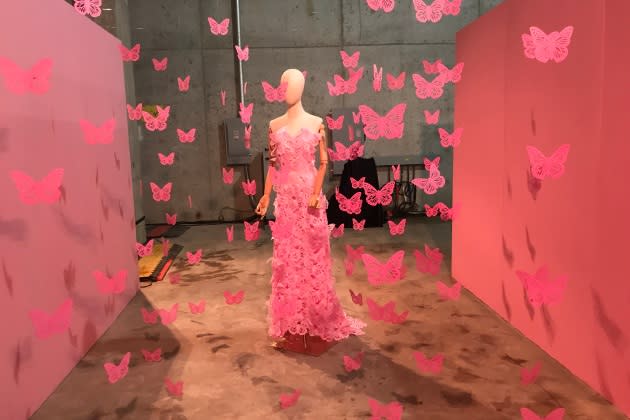
NEW YORK — As understatedly well-dressed guests filtered into the “i am u are” cocktail party Thursday night, a crew of Ukrainian volunteers scurried two floors below painting wall text and realigning mannequins in the Ukrainian Creators Fair.
Adaptability is something that many of the 120 makers that showcased at the inaugural event now know inside and out. Taking a moment to speak while meticulously applying wall text, artist and filmmaker Yarema Malashchuk sized up the situation. “There is war in Ukraine, but Ukraine is not only about war. Hopefully I’m working for and representing my country, by spreading the word about what is happening there and what’s happening in contemporary Ukrainian culture.”
More from WWD
His work, “Theater of Hopes and Expectations,” reflected the resolve that exists among many Ukrainians. Visitors can view a film and photos of the neoclassical “Stalinist” architecture house that Malashchuk and a team built as an art installation in Dusseldorf, Germany, and later dismantled and reassembled in Ukraine as a home for a displaced family. “This is like reverse ready-made,” he said.
Planning to return to Ukraine in two weeks, he said, “People are very united. When horrible things happen, people get united. You feel this unification when you walk down the street and enter different places. Cafés are still working — you can have a nice IPA beer and interesting food.”
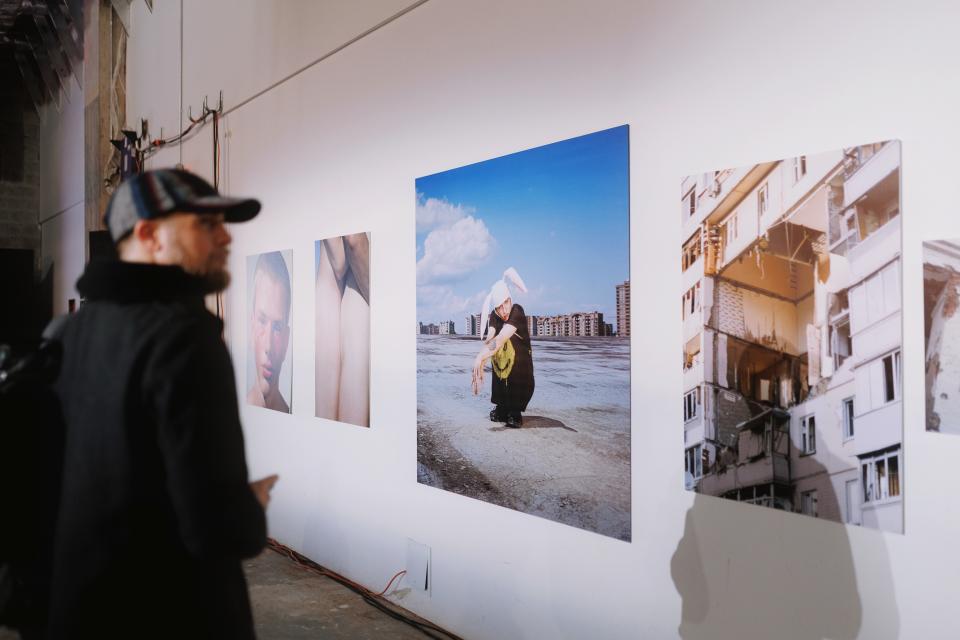
The event’s manifesto borrows from Hryhorii Skovoroda’s philosophy of unequal equality. To that end, the main gallery’s anchor display is of a fountain filling different-sized dishes with equal amounts. The concept is meant to relay that all of the people and creations might be different, but they are united by the same source — Ukrainian culture.
Covering 10,000 square feet in Skylight Essex’s just-opened Broome Street address, the showcase spotlights tech, art, crafts, fashion, cultural roots and photography. Upon arrival, visitors will face a billboard-size projection that floats images of technology and topography back and forth such as a “burdei” atop the Carpathian Mountains and then a stylish woman in a sleekly minimalist room eating grapes with an Esper Bionics prosthetic arm. The contrast is meant to underline the fact that half of the 120 featured Ukrainian makers have roots to the past and the other half in future-spinning.
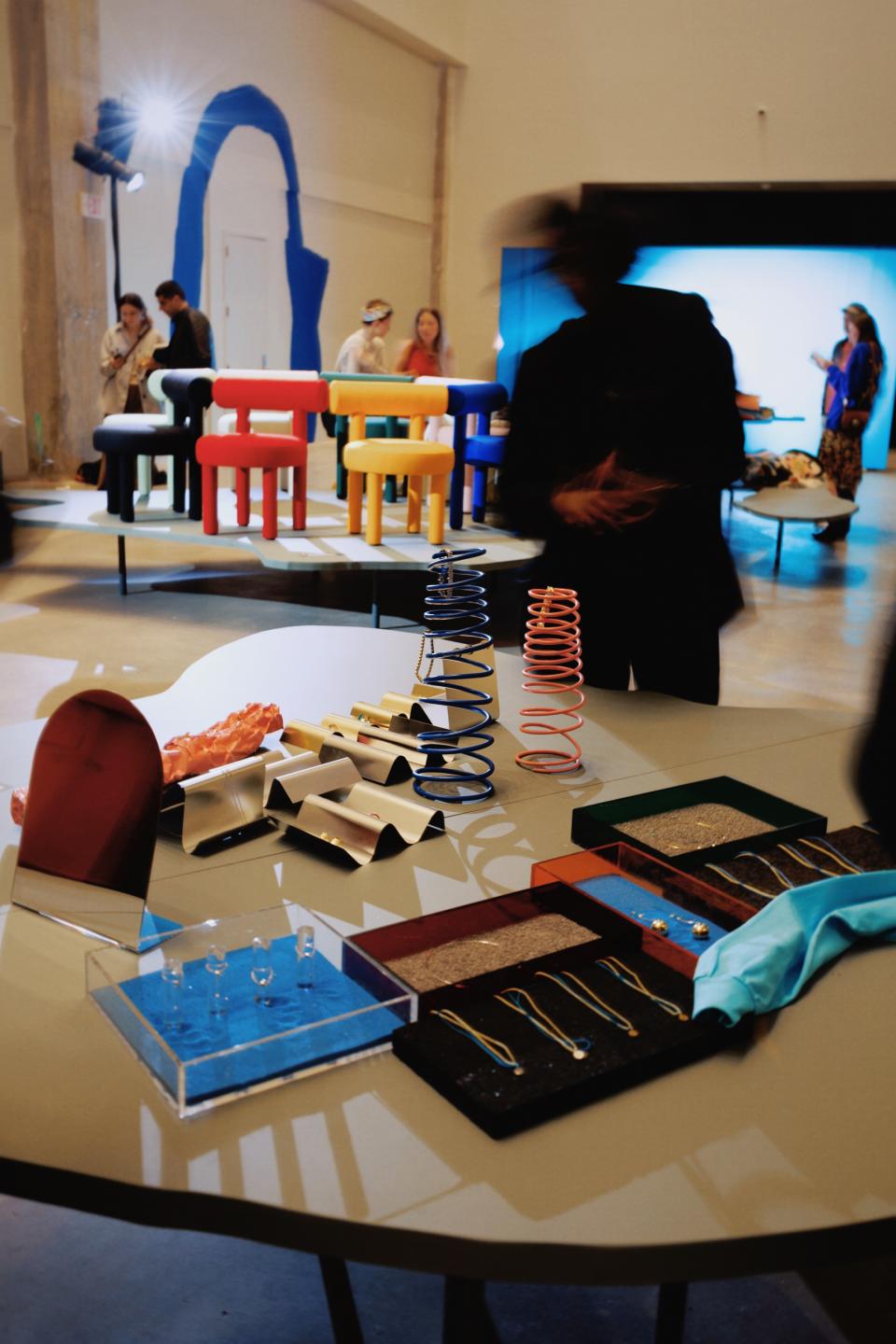
Those who peered from the mezzanine to the exhibition below saw a floor design that was meant to evoke the interior of the Saint Sophia Cathedral that was built in 1037.
Modernist colorful chairs, fashionable puffers, lab-grown diamonds and most of the other items on view were for sale. All of the items on display were created at times during wartime, which included periods of invasions, shellings or blackouts. Last summer the idea for the event was first envisioned as compact, but understandable by Anna Pagava of the public relations firm Gogola Agency, which has offices in Kyiv and Los Angeles. But the surge in interest led to a major undertaking with 300 people attending Thursday night’s opening alone. To help raise funds for Ukraine, there were 6,000 tickets for weekend attendees. Many Ukraine-based people, particularly men, who cannot currently leave the country due to their military involvement, purchased tickets in support. An estimated $411 billion will be needed to rebuild Ukraine, according to the World Bank.
Although the Lower East Side venue runs through Sunday, organizers are already exploring taking it to multiple other cities, given the interest and six months of logistics that went into its development. The musical arrangement was handled by Philipp Markovich and attendees at the opening watched a video from Volodymyr Zelenskyy. After seeing the plethora of wall space at Skylight at Essex Crossing, the production team decided to try to line up a video from the country’s leader and did so during his frontlines visit in Bakhmut earlier this week.
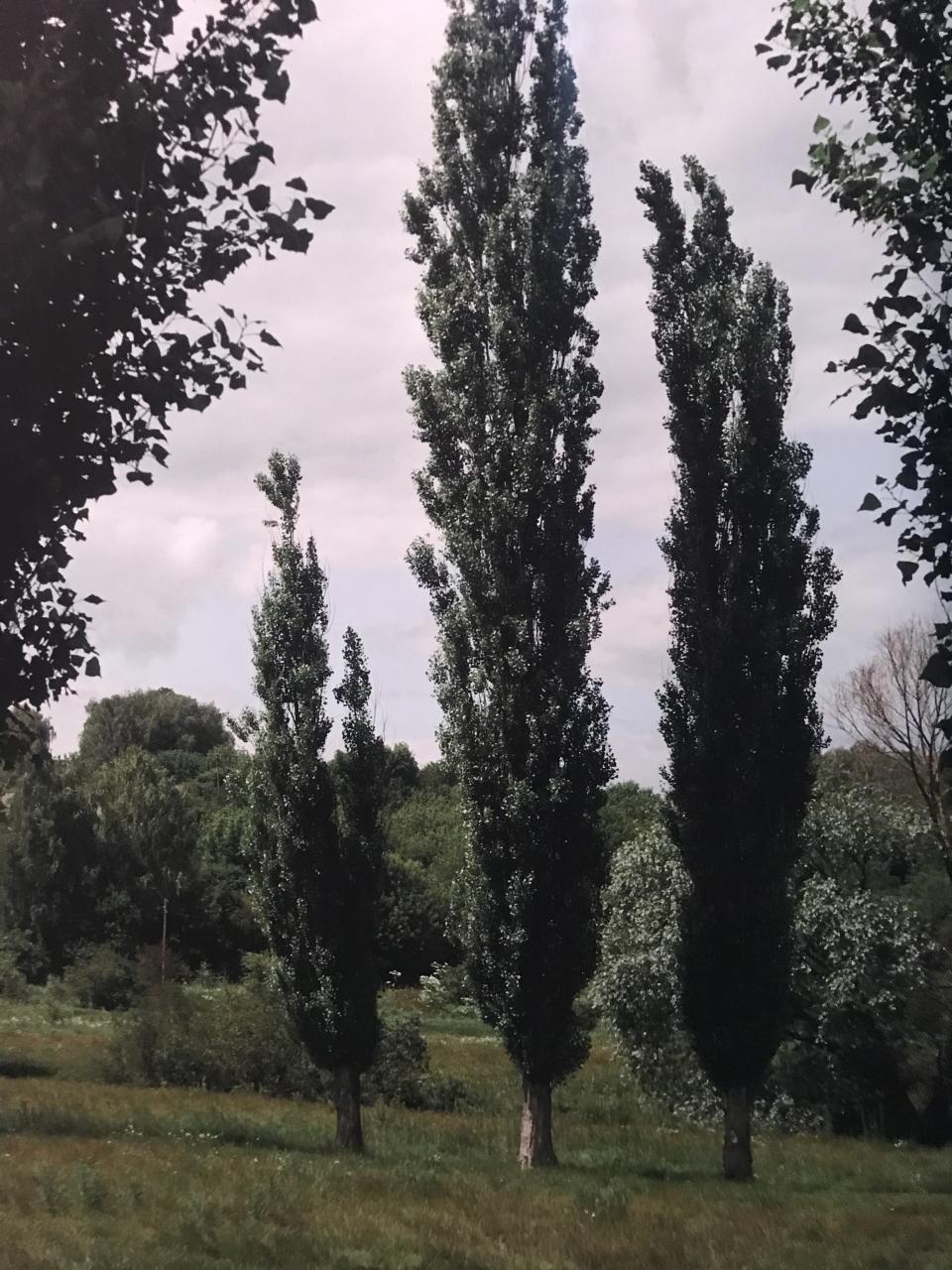
Wearing a “Back in Town” baseball hat, Nadiia Shapoval, a former model who now works as a designer and stylist, darted around inspecting her curation. Touching traditionally handwoven Gushka scarves, tapestries and rugs was encouraged to get a better hand on their suppleness, due partially to having been made in streaming mountainside rivers and sun dried outdoors. In addition to wooden cutting boards and handblown glass, there were more unexpected items like carved wooden slats for making ravioli and an array of arty books that looked better suited for a Monocle shop. Many items had QR codes for post-event purchases via Instagram. Acknowledging the breadth of offerings, Shapoval said with a laugh, “Yes, we are a big country.”
Sustainable jewelry that incorporates new materials that are typically used for spacecrafts and protective armor were on view, as well as the brand’s lab-grown diamonds. The jewelry was developed in the Kyiv facility that holds the Guinness Book of World Records’ largest lab-grown diamond at a whopping 150 carats. The Freedom collection from Guzema Fine Jewelry, a favorite resource of Ukraine’s First Lady Olena Zelenska, is also on view. Despite the ongoing war, many of the goods were made and shipped from Ukraine.
A Gogola spokeswoman said, “Even in a time of invasion, this is a moment of pride for us. All of our services are working, although not 24/7 because we do have a curfew. But they are still working quickly. Whenever the power is out in Kyiv, the cafes have blackout menus so that you can have something to eat even if they can’t cook anything. Generators are everywhere so everyone has adapted. So much so, when the lights come back, there is a sentiment of, ‘OK, I don’t know what to do with this light. Everything is working.’”
In terms of fashion, a display for Ukrainian designer Julie Pelipas, a 2023 LVMH Prize finalist, requires AR glasses to view her futuristic work. Nearby, the work of 2015 LVMH Prize contender Anton Belinsky features passport-inspired photos of everyday people wearing his T-shirts. The theme is a nod to Ukraine’s status as being the first country to have launched digital passports in 2021. A few steps away was an oversized photo of Ukrainian researchers in Antarctica wearing Ienki Ienki’s “Antarctic Expedition Parka” opposite fashion images of the brand’s colorful stylish puffers.
The intricate designs of fashion designer Anna October are featured in another area and highlight the patterns and techniques that she discovered in vintage markets in Greece and France. Ukraine’s Ivan Honchar Museum is another source of inspiration for traditional styles. “She tried to bring them into modernity to show that vintage can be and is cool,” Pagava said.
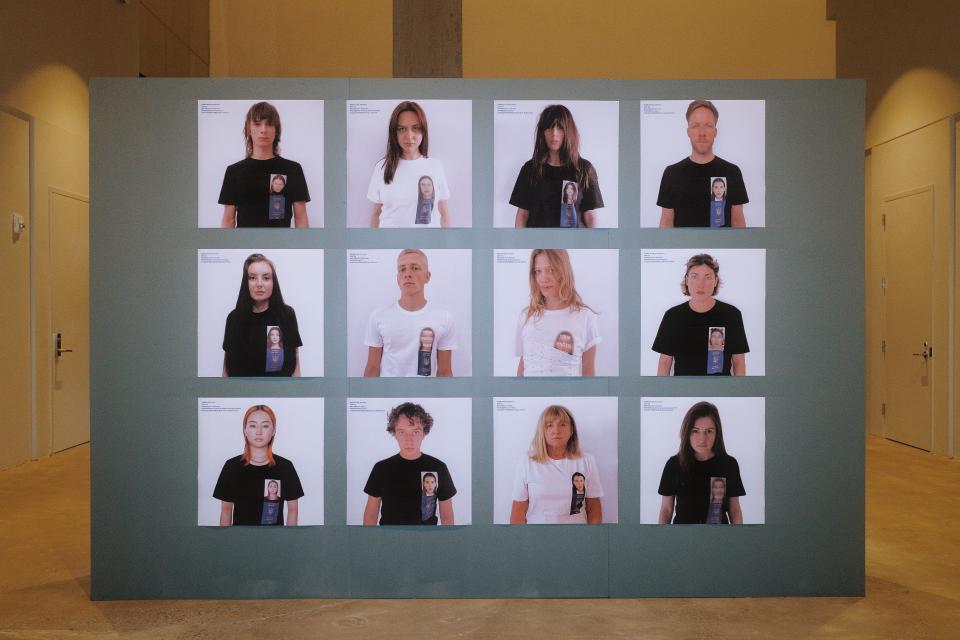
Best of WWD

